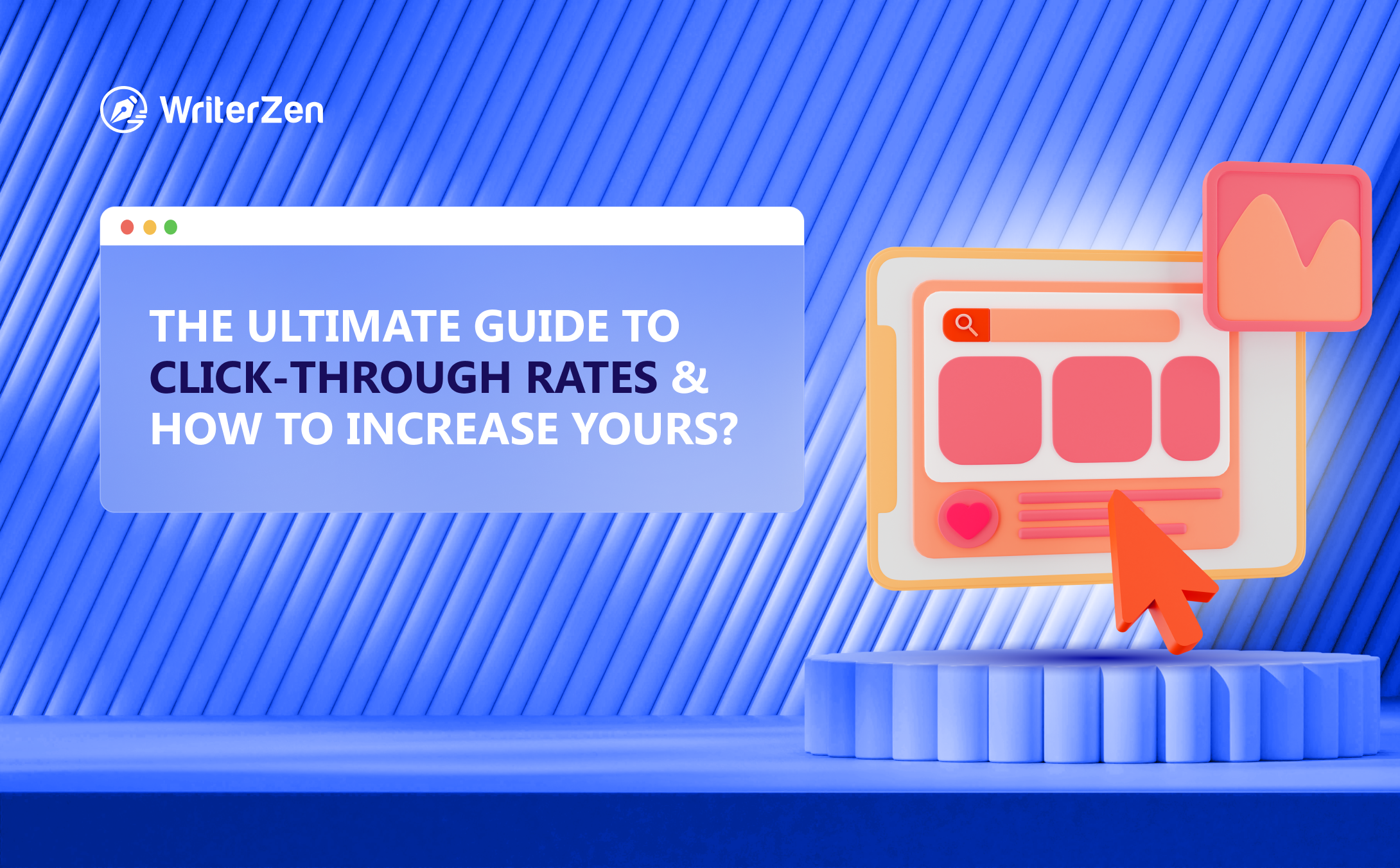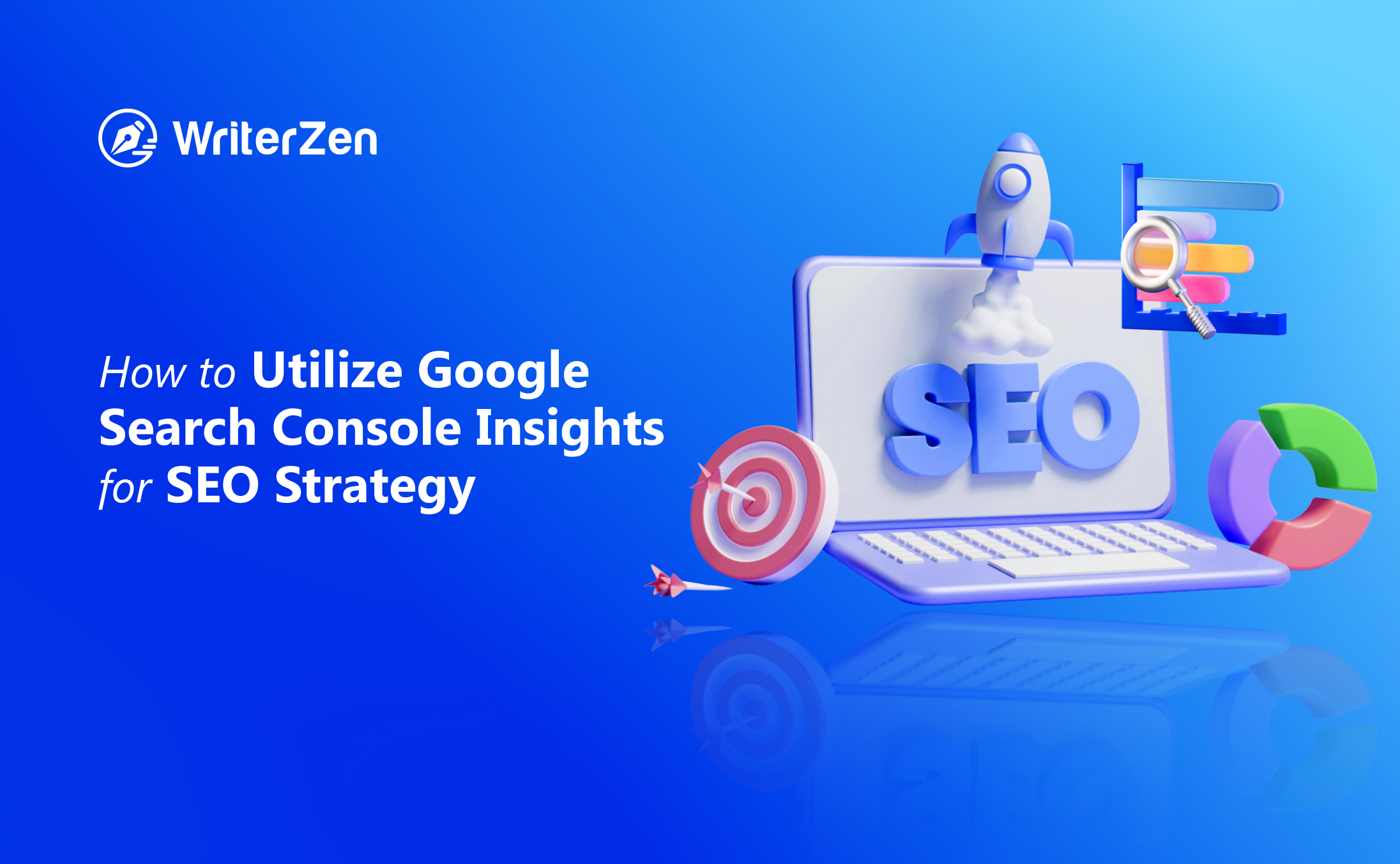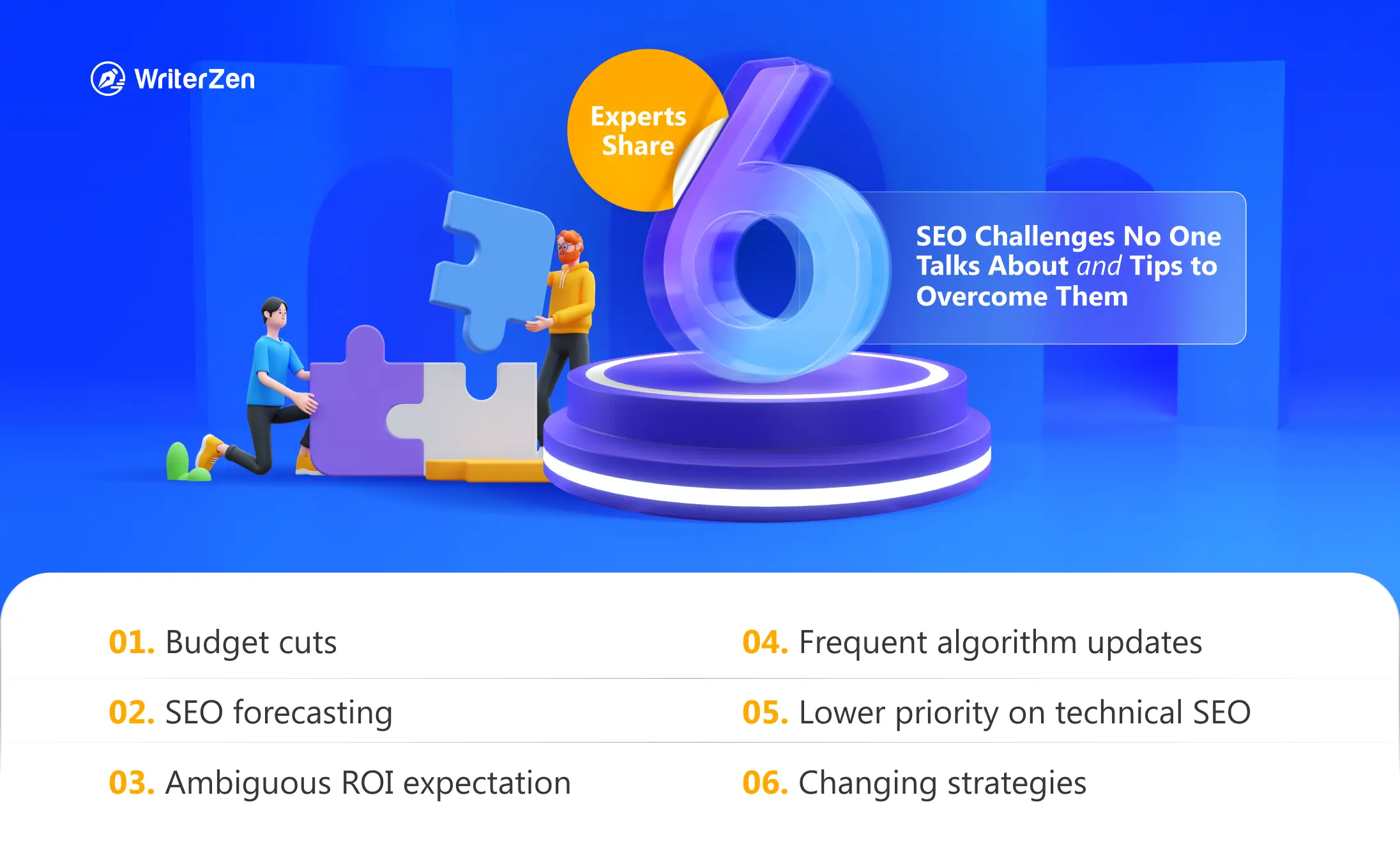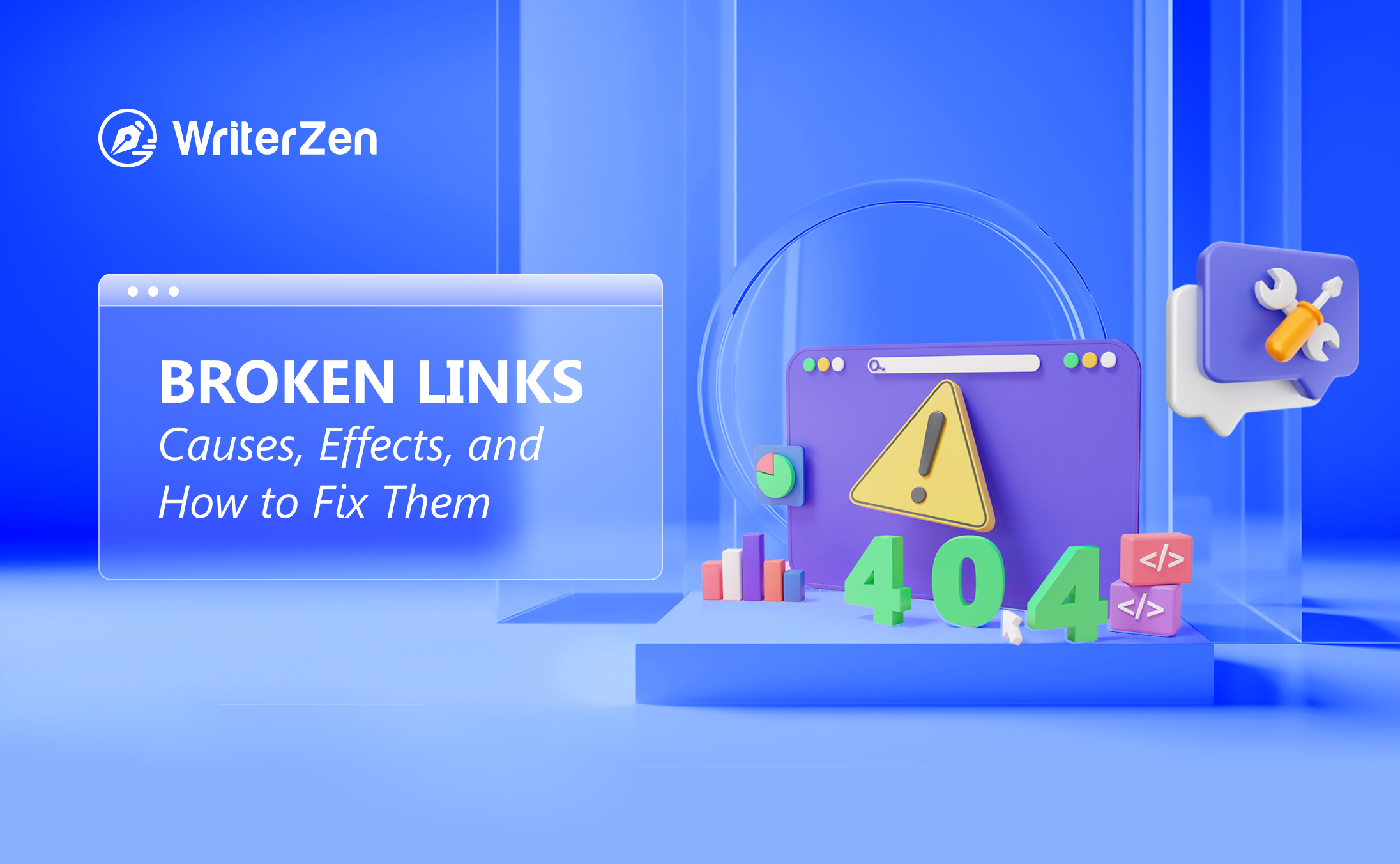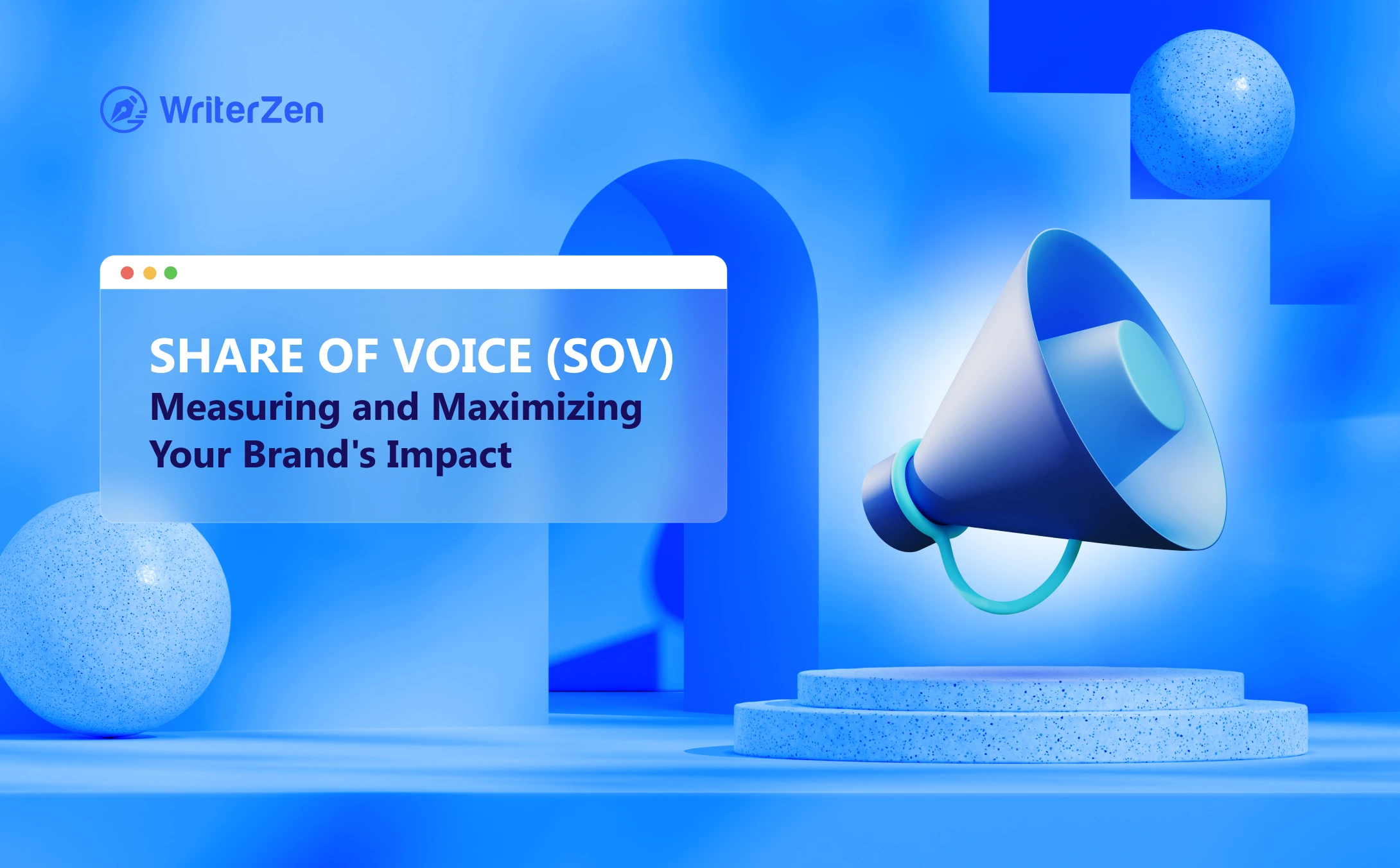What Is a Click-Through Rate?
A click-through rate (CTR) is a metric used to evaluate the success of digital marketing activities in generating clicks or visits to a website. It is an indicator of how often people see ads or search results and "click-through" to the site.
Having a high click-through rate generally shows that the ads or search results are relevant and engage the intended audience and that the webpage can meet their expectations. This can result in increased visitors to the site and possibly more conversions and sales.
It may also mean that your site is generating more traffic per Google impression. In other words, a higher number of people who notice your site in Google search results will click through to it.
Why Is Click-Through Rate Important?
Now, we are going to take a look at the importance of click-through rates for advertisers.
Understand Your Audience
Click-through rates help website and business owners understand their target audience by showing what works and what doesn’t work when trying to reach them.
When customers visit a search engine, they have a specific question and are seeking an answer. They express a need or want, which tells you exactly what they are looking for.
Using this information, you can create relevant paid search ads or SEO content. The CTR will then measure which ads and keywords are more successful than others. A low click-through rate indicates that you are targeting the wrong audience or spending money and effort on irrelevant keywords.
Measure Marketing Channel Success
The CTR metric can also help measure the success of different marketing channels. But, it does come with one disadvantage.
Even though the click-through rate evaluates the impressions from a marketing or advertising campaign, it does not convert this success into revenue. This means that it is challenging to figure out how certain marketing activities impact sales and revenue just by looking at the CTR metric.
For this reason, advertisers use the CTR with the conversion rate, which is the metric that shows the percentage of clicks that translate into actual sales.
Influence Ad Rank
Click-through rates help improve your ad's ranking in search engines. The top position on the search results page does not go to the highest bidder but rather to the advertiser who has the highest Ad Rank.
This means that CTR plays a key role in the Ad Rank formula. Your current CTRs can even affect your new campaigns’ performance. So, if you have run a series of ads with a low CTR, Google will assume that the new ads you have created are also going to have a low CTR and rank them lower on the page.
Affects the Quality Score
Quality Score can be defined as the metric that measures how relevant an advertiser is in terms of the keywords, landing pages, and ad copy used.
It is calculated based on the search engines' measurements of the expected click-through rate, ad relevance, and landing page.
So, without a doubt, a good CTR will help you get higher Quality Scores. To get a good CTR, you’ll also have to make sure your keywords, ads, and landing pages reach the right people.
Average CTR and How to Measure
Here, you will learn what an average CTR is and how to calculate it using the CTR formula.
What Is the Average Click-Through Rate?
The average click-through rate calculates the number of clicks vs. impressions for each keyword or across your marketing campaign.
The average CTR will vary depending on variable factors (like we mentioned above), such as your industry, the campaign you are running, the set of keywords you are targeting, and the purpose of your ad.
Nevertheless, the majority of industries have an average click-through rate of 4-6%, according to Google Ads paid search ads.
If you have a low average click-through rate, it can be very damaging because it brings down your Quality Scores and affects future Ad rankings. The reason for this is low CTRs indicate irrelevant ads that fail to encourage your target audience to click on the ad and visit your landing page to learn more about your products or services.
On the opposite end of the spectrum, a high average CTR for an individual keyword or across your advertising campaign does not necessarily mean success.
Your CTR is only one of many key performance indicators that determine the success of your ad. High CTRs with a low conversion rate could indicate that you are spending money and attracting the wrong target audience. This means that your ads are most likely not going to translate into sales.
How Is the Click-Through Rate Calculated?
To calculate the click-through rate, you need to take the number of times an ad has been clicked on and divide it by the total number of impressions. Then take that figure and multiply it by 100 to get a percentage.
And there’s your click-through rate.
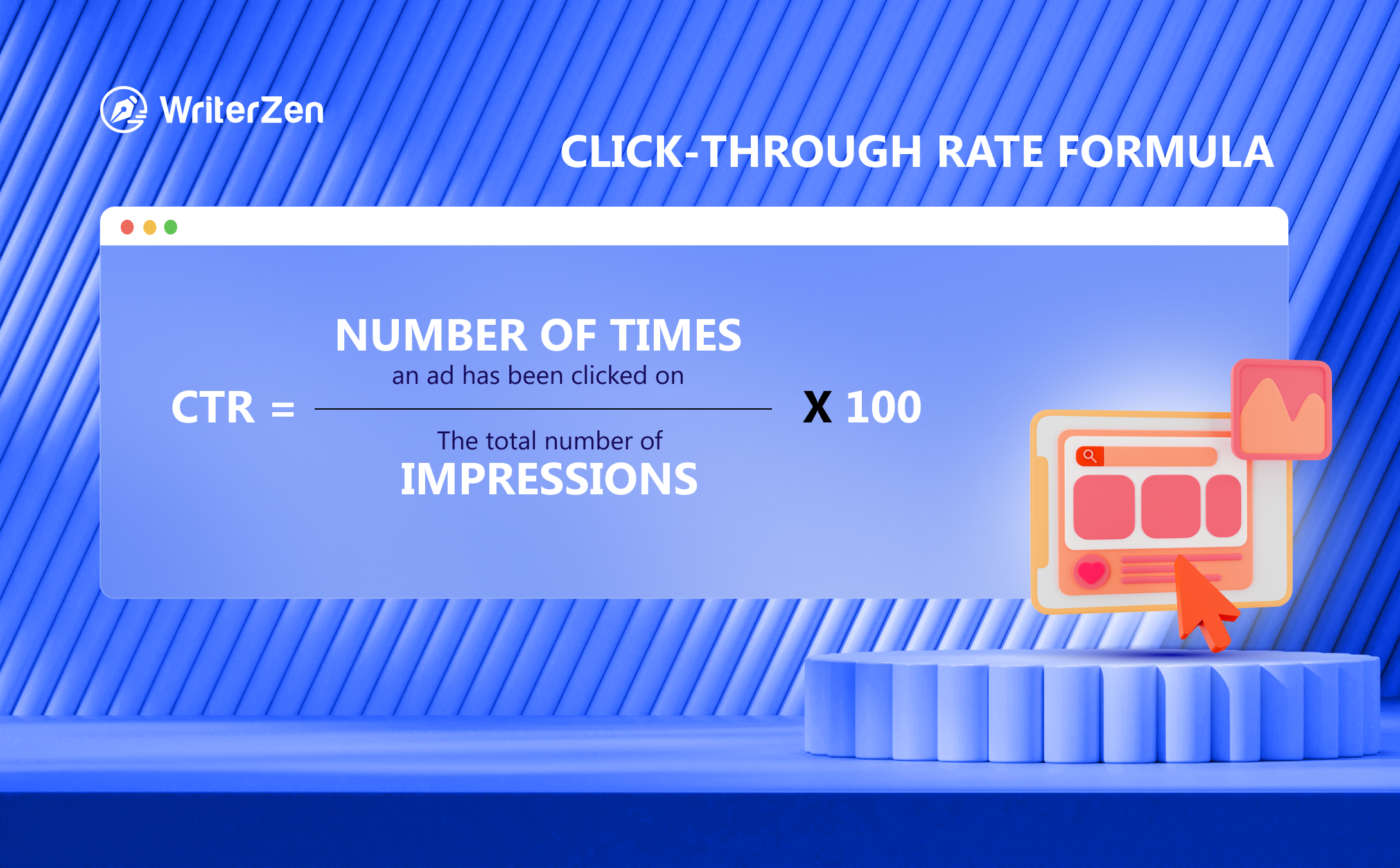
Best Practices for Increasing Your Click-Through Rate
Boosting CTR requires a combination of compelling messaging, strategic optimization, and ongoing experimentation. Below are some tips and tricks to increase your CTR for both SEO and PPC efforts.
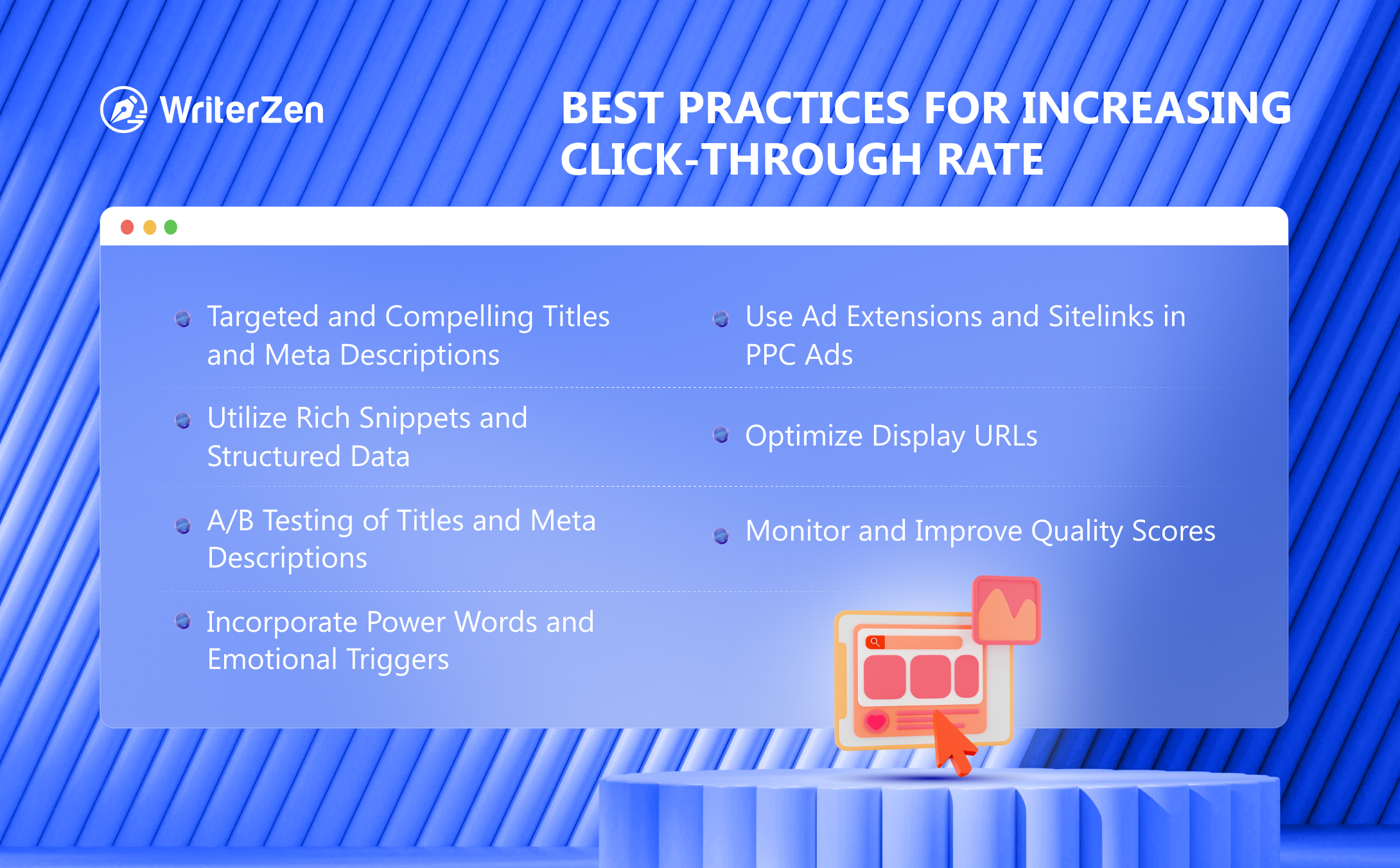
Targeted and Compelling Titles and Meta Descriptions
Craft compelling and relevant titles and meta descriptions that accurately reflect the content of the page. Use persuasive language, include relevant keywords, and highlight unique selling points to entice users to click.
Utilize Rich Snippets and Structured Data
Implement structured data markup to enhance search engine listings with rich snippets. This can include star ratings, images, prices, and other information that makes your listing stand out in search results and attract clicks.
A/B Testing of Titles and Meta Descriptions
Conduct A/B testing to experiment with different variations of titles and meta descriptions. Test different languages, formatting, and calls-to-action to see which versions drive the highest click-through rates. Make data-driven decisions based on the results.
Incorporate Power Words and Emotional Triggers
Include powerful and compelling words that evoke emotions or curiosity in your titles and meta descriptions. Trigger words like "discover," "exclusive," "proven," or "limited offer" can increase the appeal and make your listings more clickable.
Use Ad Extensions and Sitelinks in PPC Ads
Leverage ad extensions and site links in your PPC ads to provide additional information and options for users. This can include direct links to specific pages, phone numbers, location information, or other relevant extensions that improve visibility and boost CTR.
Optimize Display URLs
Make sure your display URLs are concise, relevant, and user-friendly. Include keywords when possible, remove unnecessary parameters, and ensure they accurately represent the content users will find on your landing page.
A clean and transparent URL can increase trust and attract clicks.
Monitor and Improve Quality Scores
For PPC campaigns, keep a close eye on your ad quality scores. These scores impact your ad rankings and cost per click. Improving quality scores involves optimizing ads, landing pages, and targeting to provide a better user experience.
Higher quality scores can result in better ad positions and higher CTR.
Final Thoughts
In conclusion, understanding and optimizing click-through rates (CTR) is crucial for driving traffic and achieving success in both SEO and PPC campaigns. By implementing the best practices discussed in this guide, you can significantly improve your CTR and ultimately increase engagement, conversions, and revenue.
With a data-driven approach and a commitment to refining your strategies, you can really take your online marketing efforts to the next level!


